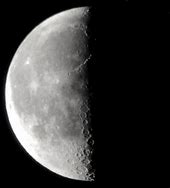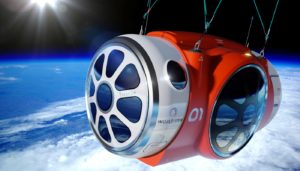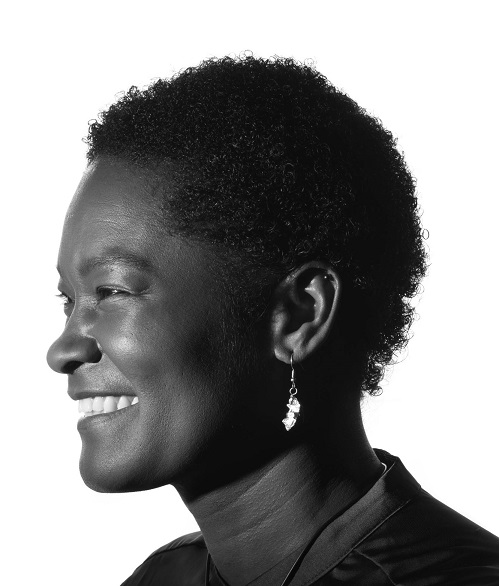Last Quarter Moon
Posted on by David Searle
Views: 2

Views: 2
This event is free and open to public, to attend please register using the zoom.us link on the box above.
Come and socialize with your fellow astronomy enthusiasts face-to-face virtually!
Bring your latest astrophotos, mini-presentation, questions or none and your own refreshments.

Views: 2
This is an online event, to attend please register with zoom using the link on the box above.

What is just a quarter the diameter of the Earth but may have twice as much water as of all the Earth’s oceans combined under an icy shell? Meet Europa – a beautiful ice-ocean moon of Jupiter that may have all of the ingredients necessary for life.
Flight Systems Engineer Tracy Drain will give you an inside peek into the mission that is in development right now, preparing to go explore this fascinating place. The Europa Clipper spacecraft will carry a suite of science instruments on a journey from the Earth out to the Jupiter system. Once there, it will execute a series of close flybys of Europa, braving the intense radiation field that surrounds Jupiter, to gather the data that will help scientists answer some long-standing questions about this world.

Tracy Drain is a Flight Systems Engineer working at NASA’s Jet Propulsion Laboratory. In her 20 years at JPL, she has participated in the development and operation of the Mars Reconnaissance Orbiter (a science and relay orbiter at Mars), the Kepler mission (searching for Exoplanets), the Juno mission (a science orbiter at Jupiter), and the Psyche mission (an asteroid mission slated to launch in 2022). She is now the lead Flight Systems Engineer for the Europa Clipper mission, currently planned to launch in 2024. A life-long learner, Tracy loves to encouraging people of all ages nurture their curiosity and explore the wonders that surround us every day.
https://europa.nasa.gov/mission/about/
https://europa.nasa.gov/resources/148/europa-water-world-infographic/
Views: 2
This is an online event held by OCA for VCAS.
No prior registration is required but when entering the webinar, zoom will ask for your name and email.
At the time of the meeting, to attend via zoom app click here, via your browser click here.
To install the zoom app click here.
Views: 1
This is a free online event, to attend please register with zoom using the”View Event Website” link on the box above.
The 6th session of the Beginners Astronomy Class covers the basics of astrophotography, covering different types of imaging, how different types of cameras are used for this kind of photography, and other equipment and considerations for taking a good picture.
This session is taught by Kyle Coker, who is active in the club’s AstroImaging special interest group.
Free and open to the public as well as members of OCA.
For details, please visit here and download the sample information PDF package.
Views: 1
This event is free and open to public; to attend please register with zoom by clicking on the “View Event Website” link on the box above.
This is the “How to Use Your Telescope” session of the Beginners Astronomy Class. If you have a telescope and would like some help learning to set it up and use it, attend this on-line class.
For details, please visit here.
Free and open to the public as well as members of OCA.
Views: 0
This event is free and open to public; to attend please register using the zoom.us link on the box above.
Session 4 of the Beginners Astronomy Class covers the science behind the telescope.
How do our eyes actually perceive objects we see in the telescope and what is the physics that allows that perception.
For details, please visit here and download the sample information PDF package.
Views: 2
This is a free and open to public online event, to attend please register with zoom using the link on the box above.
The 3rd session of the Beginners Astronomy Class covers different methods of finding objects in the night sky. Special topic is learning the constellations.
For details, please visit here and download the sample information PDF package.
Views: 2
This is a free online event, to attend please register with zoom using the”View Event Website” link on the box above.
The 2nd session of the Beginners Astronomy Class covers the different types of equipment used to observe the night sky, including telescopes, mounts, eyepieces, filters, and advantages and disadvantages of different options.
This session is a must if thinking about buying a telescope.
For details, please visit here and download the sample information PDF package.
Views: 2
This event is free and open to public, to attend please use the zoom.us link on the box above.
The first session of the Beginners Astronomy Class gives a general overview of all of the different objects you can see in the night and day time skies, with some history and information about what they are and their significance. An overview of the current scientific understanding of the Universe’s beginning, present and future is also covered.
For details, please visit here and download the sample information PDF package.
Views: 1